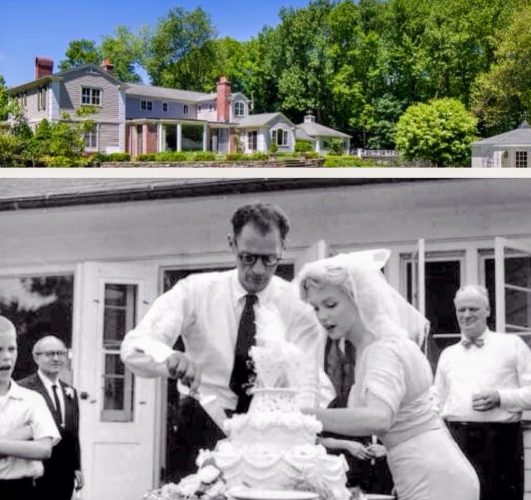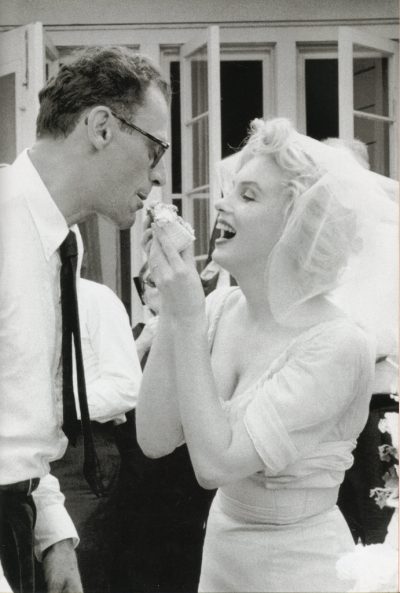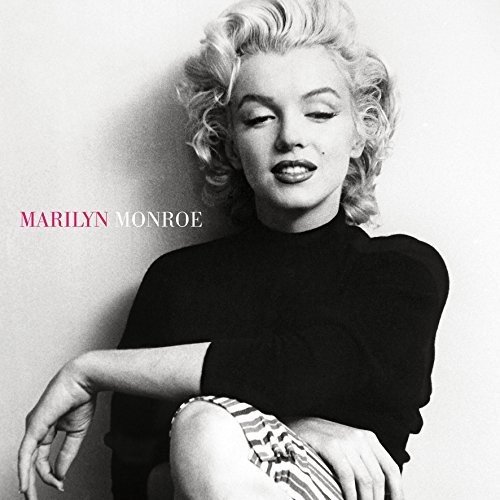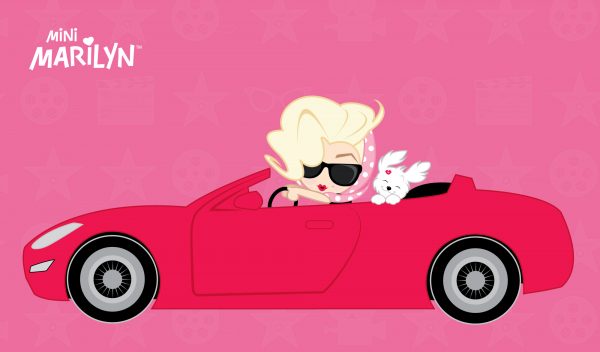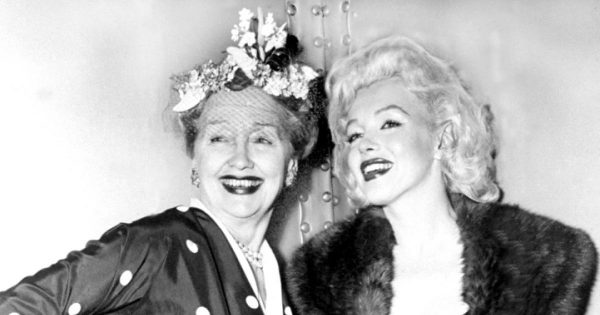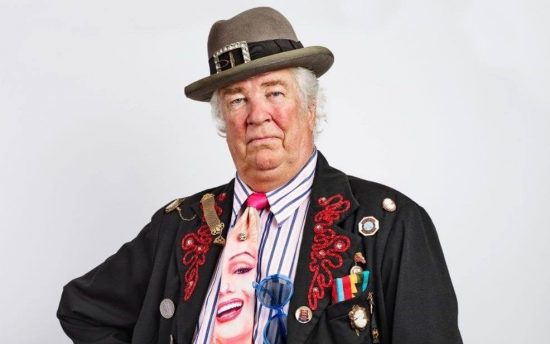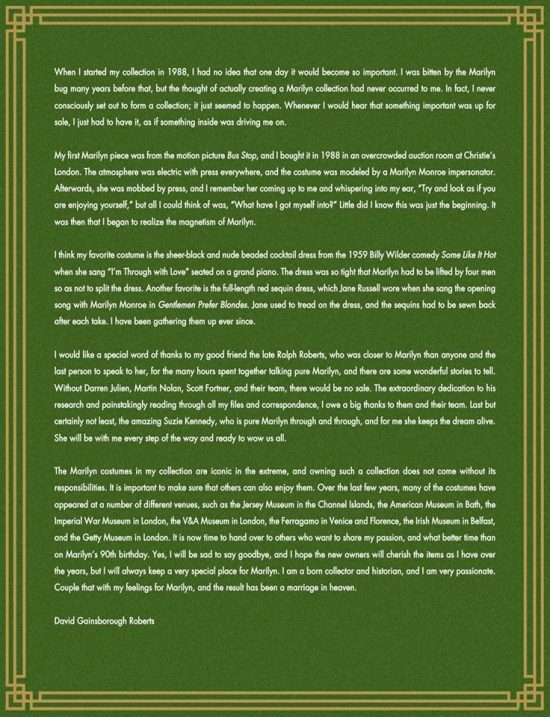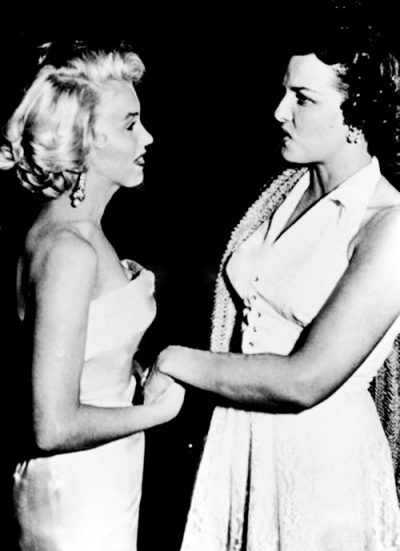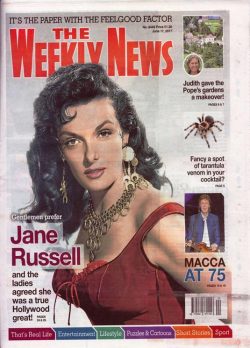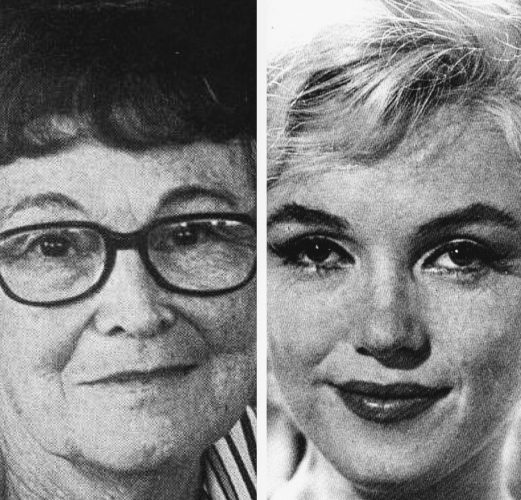
Rightly or wrongly, Marilyn’s housekeeper Eunice Murray is perceived as being one of the most controversial figures in the mystery of her final days. In a fascinating article for HuffPost, Joel Brokaw recalls the events following Marilyn’s death in 1962, when his mother Florence suffered a nervous breakdown, and a new nanny was hired. (You can read more about Marilyn’s friendship with Joel’s father, the legendary Hollywood agent Norman Brokaw, here.)
“It was the fall of 1962 and I was aware enough of current events to know that Eunice Murray was not a run of the mill domestic worker that my father Norman Brokaw employed to take care of my brothers and me during one of my mother’s involuntary vacations at the mental hospital. Mrs. Murray was indeed in the news and for all the reasons you’d never want to make you famous.
First impressions do matter. There was something that didn’t quite add up about her. To a nine-year-old, she seemed nice enough. But warm and openhearted she definitively was not. She was caring, responsible and totally stalwart, but with more in common to an English butler, tinged with a cold and slightly standoffish manner.
It had been only a matter of a few weeks if not days before Mrs. Murray showed up in her late model Dodge Dart to our Laurel Canyon home that she had became part of one of those infamous, iconic moments of history. Early one morning before dawn, she noticed the light on behind her employer’s locked bedroom door. Inside was the most famous woman in the world at that time, lying naked on the bed and quite dead, clutching a telephone in her hand. It was Marilyn Monroe.
For the rest of her days, Mrs. Murray was ensnared in all sorts of conspiracy theories. What a perfect storm between the mysterious suicide of the most iconic film actress in history and intrigue with the Kennedy family! Had she given Marilyn an overdose in the form barbiturate-laced enema as some have theorized? Did she have the inside scoop about the affairs with President Kennedy and his brother Robert? Had Robert been at the home that evening? Could he have killed her with a lethal injection because a leak about the alleged affair could have destroyed JFK’s reelection campaign? Were the pill bottles on the bed stand planted there? Everyone believed that Mrs. Murray had to know the truth, but why wasn’t she telling anybody? She was an easy target of suspicion in the category of ‘the butler did it.’
I can only guess how my father came to hire Mrs. Murray to be our nanny. True, my father had a personal connection to Marilyn. He took the then up and coming starlet around to studio auditions in the late 1940s and early 1950s when she was the paramour of his uncle Johnny Hyde, a powerful movie agent. He told us at that time that he was somewhat embarrassed about driving her around in the old jalopy he had. So, he removed the old fashioned running boards on the side of the car to make it look more presentable.
My best guess was that Mrs. Murray had been a referral from a professional. Perhaps my mother was also a patient of Marilyn’s psychiatrist Dr. [Ralph] Greenson. Dr. Greenson was known to place Mrs. Murray as a housekeeper/companion to his patients. Timing is everything. Mrs. Murray was available and could use a new gig (and perhaps a place to hide out). She did have an apartment in Santa Monica. Her next-door neighbor was Stan Laurel of the golden age of film comedy duo Laurel and Hardy. Mrs. Murray said that I could come with her to meet him, an invitation I regretfully did not accept.
Both as it related to parenting and mental illness in America of the early 1960s, there was not a lot of sensitivity or higher consciousness for that matter. If the answer wasn’t in Dr. Benjamin Spock’s ubiquitous book on child-rearing or if you didn’t have a strong and active grandparent in the home, you were on your own. Doctors did make house calls though, and the milkman delivered. The options for emotionally sick people like Marilyn Monroe and my mother were crude and often barbaric compared to today’s treatments. Mother’s little helpers like Milltown was my mother’s go-to. The shock treatments she got as the next step up when the medicines didn’t give relief were highly disturbing for a child like me to think about.
Sometime later in the summer of 1963, my mother returned home. By that time, Mrs. Murray had had enough of my brothers and me. What drove her over the edge was driving us a dozen or more times a month to night games at Dodger Stadium, waiting hours at a nearby friend’s house, ear glued to Vin Scully’s voice to know when to fish us up. My father wisely bought us the season tickets to give us a healthy escape from our messed up childhoods. Mrs. Murray did little to hide her burn out, becoming progressively grouchier. The last straw was one night when the game went into extra innings and didn’t pick us up until 1 a.m. My brother David recalls that although most cars didn’t have air conditioning back then, the air in Mrs. Murray’s car that night was cold as ice. So, as soon as Florence Brokaw was stable enough and showed capacity to more or less manage her responsibilities, Mrs. Murray quit and she and her Dart turned around in the driveway and disappeared forever out of my life.”
